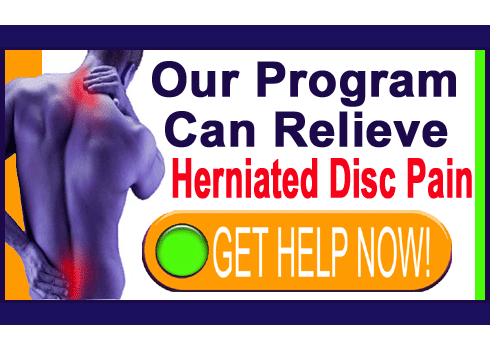Within the current fast-paced digital world, tackling pain has become more accessible than ever. As a result of the rise of technology, individuals dealing with various forms of pain can turn to cutting-edge apps, online resources, and telehealth services that address their specific needs. Pain management is now confined to conventional methods; it has changed to embrace a wide range of therapies and treatments that exploit the power of digital tools.
Comprehending pain management is vital for anyone experiencing with discomfort, irrespective of whether it is acute or chronic. This comprehensive guide examines the diverse types of pain, the treatments on offer, and how dedicated pain management clinics can play a pivotal role in enhancing quality of life. From the science behind pain perception to holistic methods that include diet and mindfulness, we will delve into a variety of options that enable individuals on their journey to relief. If you are seeking guidance on physical therapy, chiropractic care, or alternative treatments like acupuncture and CBD, this article aims to provide valuable information into addressing pain in the modern age.
Understanding Pain Control
Pain management encompasses a variety of treatments and interventions aimed at reducing pain and boosting the quality of life for people suffering from acute and long-lasting pain. It includes a holistic approach that can include pharmaceuticals, rehabilitation, emotional assistance, and alternative treatments. By grasping what pain management entails, patients can better appreciate the options available to them and implement effective strategies for pain reduction.
The various forms of pain, including acute and persistent, demand tailored management techniques. Intense pain usually occurs from injury or procedures and tends to diminish as the problem improves. Persistent pain, on the other hand, can persist for months or even years, often needing ongoing treatment and a blend of approaches to manage successfully. Identifying these differences is crucial in choosing the right pain management approach for each patient, as the strategies that succeed for one type of pain may not be effective for a different type.
Pain management clinics hold a significant role in enhancing the quality of life of those troubled by pain. These specialized facilities offer all-encompassing services, including evaluations, tailored treatment plans, and availability to a selection of therapies. By working closely with healthcare providers, patients can understand their pain, investigate treatment options, and discover new ways to manage their condition, ultimately leading to a more manageable and fulfilling life in spite of their discomfort.
Treatments and Treatments for Pain Relief
Pain management therapies encompass various of approaches, each tailored to address specific types of pain and underlying causes. Conventional techniques such as physical therapy focus on fortifying muscles and improving mobility, while also employing techniques such as manual therapy and exercise. Physical therapists design personalized programs that can greatly alleviate chronic pain and enhance the general quality of life. Additionally, complementary treatments like chiropractic care and massage therapy have gained recognition for their effectiveness in mitigating muscular tension and improving spinal alignment.
Complementary approaches include acupuncture, which entails inserting thin needles at specific points on the body to activate the nervous system and promote self-healing. This traditional practice has been shown to alleviate pain for issues such as migraines and chronic back pain. Furthermore, the use of TENS (Transcutaneous Electrical Nerve Stimulation) therapy offers a minimally invasive method for pain control by delivering electrical impulses to interfere with pain signals sent to the brain. These treatments demonstrate the varied landscape of pain relief strategies available today.
In the past few years, advancements in medical treatments have led to innovative options like regenerative medicine and interventional pain management. Techniques such as radiofrequency ablation and nerve blocks provide targeted pain relief by disrupting nerve signals or diminishing inflammation. Additionally, the integration of habit alterations, including nutritional modifications and mindfulness practices, plays a crucial role in managing pain holistically. Collectively, these therapies and treatments offer individuals a comprehensive toolkit for efficiently addressing their individual pain challenges.
Different Approaches and Lifestyle Changes
In conjunction to traditional pain management treatments, exploring alternative approaches can contribute greatly to pain alleviation and total well-being. Awareness and meditation have gained recognition for their capability to reduce tension and anxiety, which are frequently intertwined with chronic pain conditions. By fostering internet between the mind and body, these methods enable people to develop coping strategies that can alter their perception of pain and enhance their quality of life.
Diet and dietary choices also play a critical role in pain management. An anti-inflammatory diet, rich in produce, vegetables, grains, and omega-3 fatty acids, can help reduce swelling that plays a role to certain types of pain. Including foods such as fatty fish, seeds, and dark leafy vegetables, along with staying fluid intake, can support the body’s innate immune system and potentially reduce pain feelings. Moreover, being mindful of catalysts, such as processed foods or excessive sugar, can further aid in managing pain levels.
Exercise is another indispensable component of pain management. While it may appear counterintuitive to engage in exercise when in pain, regular, gentle movements can build muscles, improve mobility, and release endorphins—natural pain relievers. Activities such as yoga, swimming, and walking can be tailored to personal abilities, providing for a secure and effective way to combat pain. Adopting a routine that combines exercise with relaxation techniques offers a comprehensive approach that can lead to lasting relief from pain.

